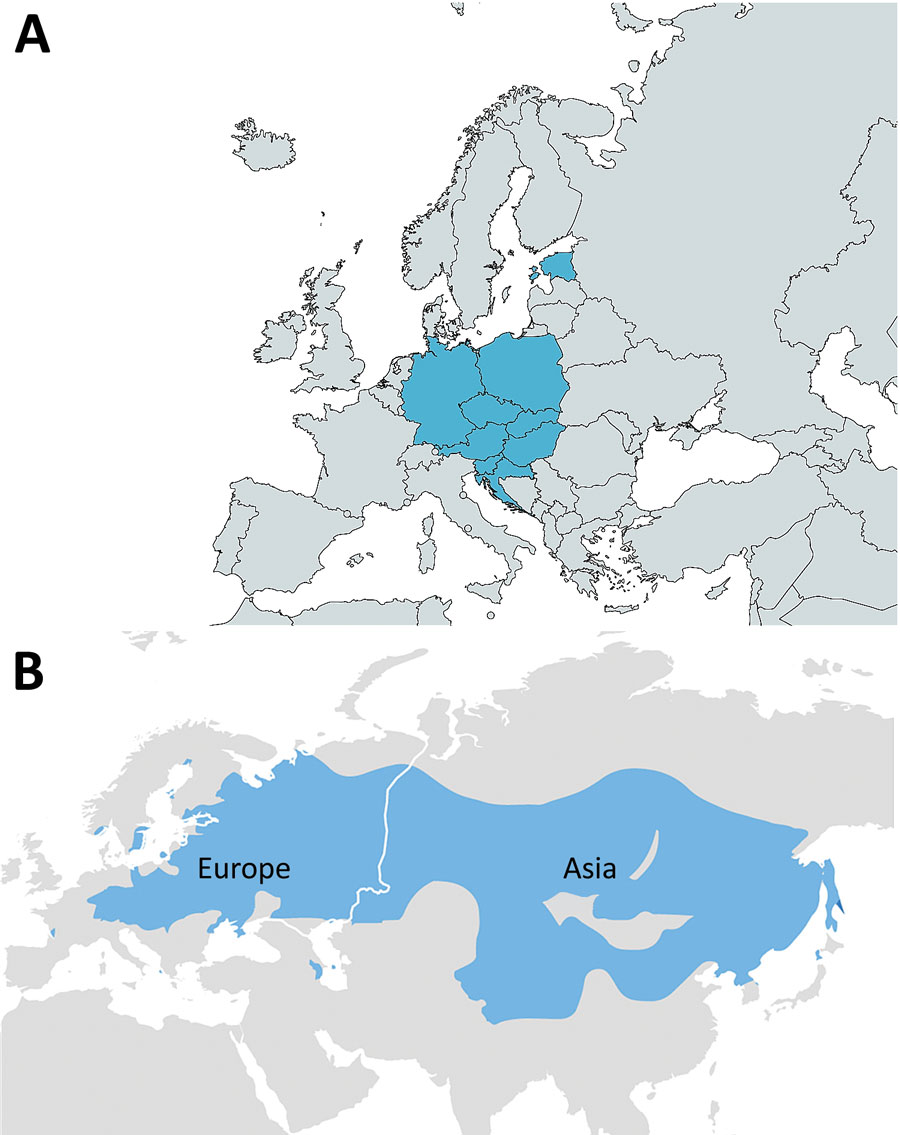Volume 28, Number 10—October 2022
CME ACTIVITY - Synopsis
Systematic Review and Meta-analysis of Foodborne Tick-Borne Encephalitis, Europe, 1980–2021
Figure 1

Figure 1. Geographic distribution of reported foodborne tick-borne encephalitis (FB-TBE) cases (blue shading), Europe, 1980–2021. A) The FB-TBE triangle in Europe. Russia had 5 cases in 1991 (not shown). Map created by using MapChart (https://mapchart.net). B) The tick-borne encephalitis belt, spanning from western Europe, across Russia, China, and Mongolia to Japan. Map from the Centers for Disease Control and Prevention (https://www.cdc.gov/tick-borne-encephalitis/geographic-distribution/index.html).
Page created: August 05, 2022
Page updated: September 15, 2022
Page reviewed: September 15, 2022
The conclusions, findings, and opinions expressed by authors contributing to this journal do not necessarily reflect the official position of the U.S. Department of Health and Human Services, the Public Health Service, the Centers for Disease Control and Prevention, or the authors' affiliated institutions. Use of trade names is for identification only and does not imply endorsement by any of the groups named above.